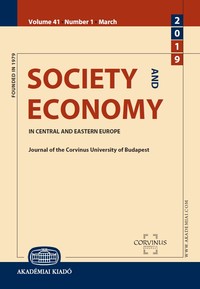Macroeconomic determinants of external indebtedness of Ethiopia: ARDL approach to co-integration
Macroeconomic determinants of external indebtedness of Ethiopia: ARDL approach to co-integration
Author(s): Sisay Demissew Beyene, Balázs KotoszSubject(s): National Economy
Published by: Akadémiai Kiadó
Keywords: macroeconomic determinants; external indebtedness; ARDL; Ethiopia; C32; E62
Summary/Abstract: Although Ethiopia is one of the Heavily Indebted Poor Countries (HIPC), there is a lack of empirical studies about the determinants of its external indebtedness. This paper aims to fill this gap by examining the macroeconomic determinants of the external indebtedness of Ethiopia between 1981 and 2016, using the two- and three-gap models as a theoretical framework and an autoregressive distributed lag bound testing approach. The result shows that in the long run, the savings-investment gap, trade deficit, fiscal deficit, and debt service have a positive and significant impact on external indebtedness. However, the growth rate of gross domestic product, trade openness, and inflation negatively and significantly affect the external indebtedness of the country. These results coincide with the predictions of the two- and three-gap models of the theoretical framework. The study argues that appropriate macroeconomic, social, and supply-side policies are essential to reducing the external indebtedness of Ethiopia.
Journal: Society and Economy. In Central and Eastern Europe ǀ Journal of the Corvinus University of Budapest
- Issue Year: 42/2020
- Issue No: 3
- Page Range: 313-332
- Page Count: 20
- Language: English

